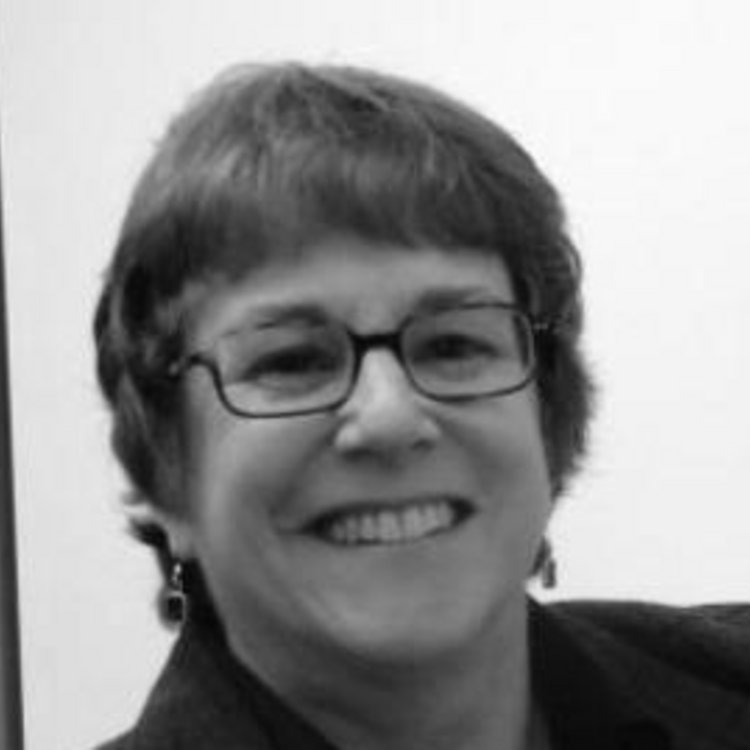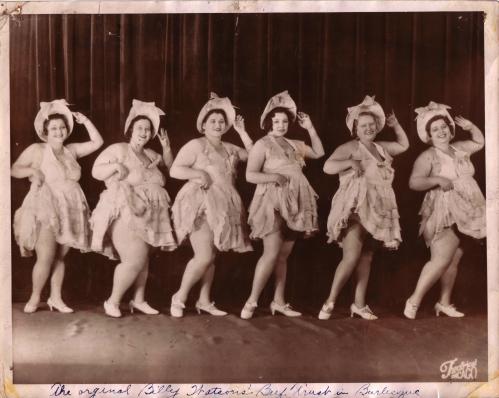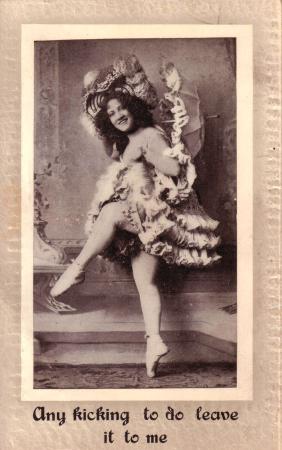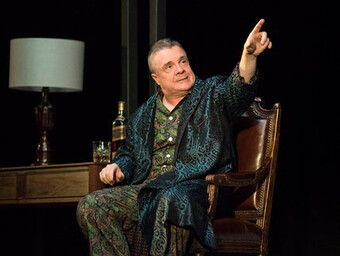Interview with Beth Kattelman, Curator of Theatre Research Institute, Ohio State University
How did theatre become the way it is today? This blog series will look at aspects of our present-day theatre that we take for granted and explore where they came from. It will also feature interviews with theatre archivists about their work and how it relates to new theatrical productions.
Michael Lueger: You wear many different hats including professor, curator, and artist. How did you get to where you are, and how do those different roles complement one another?
Beth Kattelman: I’ve always had a love for both theatre and books, so this job is the perfect combination of those two interests. I earned a PhD in theatre from Ohio State, and as I was working on my dissertation, I was the General Manager of the (now defunct) Borders Book Shop here in Columbus, Ohio. Then, I began working at the Columbus Public Library, and I went back to school to get my Master of Library and Information Science degree at Kent State University. When I graduated with my MLIS, this job was just opening and the timing was very fortuitous.
As the Curator for the Institute, it’s very helpful to hold a PhD in the subject because it allows me to connect with the students on the same level as the theatre faculty. I’m familiar with the theatre jargon and have firsthand experience of putting together a performance. I also occasionally work in local theatre as a director, performer, and puppet designer. I have directed several shows for the Ohio State Theatre Department, which gives me another way to directly connect to our students. It allows them to see me as a theatre colleague and makes it easier for them to seek me out for research. Both having a Doctorate in Theatre and publishing in this field helps me connect with the theatre faculty too.
Michael: What holdings in the TRI do you most want people, especially theatre artists, to know about?
Beth: All of them! …Seriously, that’s a tough question to answer because it really depends on which documents best complement their work. We do have several collections that I think some theatre artists would find extremely useful. For example, we hold one of the largest collections of burlesque materials with our Charles H. McCaghy Collection of Exotic Dance from Burlesque to Clubs. It contains a wide variety of materials on all aspects of striptease in performance, from the mid-nineteenth century to modern strip clubs and the neo-burlesque movement. You can see photos of some cabinet cards from that collection on Flickr and in the OSU Knowledge Bank.
We also have a wonderful resource on the craft of acting in the Jeff Corey Collection. Corey was a Hollywood actor who was blacklisted during the period of the House Un-American Activities Committee. Unable to find acting jobs, Corey began to teach acting lessons out of his house. He gained the reputation of being a fantastic teacher. Even though the studios wouldn’t hire him as a performer, they sent their actors to him. Corey taught many big names of the time including James Dean, Jane Fonda, Richard Chamberlain, Leonard Nimoy, Anthony Perkins, Jack Nicholson, and Barbra Streisand. He kept copious notes on his teaching and we have those plus all the supplemental materials he used for his classes.
I’m familiar with the theatre jargon and have firsthand experience of putting together a performance. I also occasionally work in local theatre as a director, performer, and puppet designer.
Photo: The Ladies of Billy Watson’s Beef Trust Burlesque. Photo courtesy of the Charles H. McCaghy Collection at the Jerome Lawrence and Robert E. Lee Theatre Research Institute, Ohio State University.
Michael: What’s been your experience with artists using the materials in the collection? Have you personally drawn from the TRI’s holdings for your own theatrical work?
Beth: We have had numerous artists, from various disciplines who use the material here at the TRI. Also, students who are getting a MFA in Acting are required to create a one-person show as part of the program. Several of them do research within our collections to find material, or to gain context for the show they put together. Some years ago, one student used our minstrel show scripts as a basis for his piece on the practice of African-American performers wearing blackface. Another former student used our Elsie Janis collection to put together a recreation performance of this actress for a symposium on “First Actresses.”
We have also had several playwrights use our collections to research plays they were working on. Our 2014 TRI Research Fellowship recipient Bianca Sams spent a month working with our Robert Breen Collection, which chronicles the Robert Breen and Blevins Davis production of Porgy and Bess. From 1952 to 1956, this production toured in the US, Europe, Russia, Africa, the Middle East, and Latin America. Her resulting play, Simply Bess, has already had several readings at play festivals across the nation. In addition, we regularly work with faculty from various departments across campus to collaborate on symposia and exhibitions.
I have drawn from the TRI’s collections for my own theatrical work. One of the pieces in our Doris Cole Abrahams Collection is a horse mask from the original Broadway production of Equus. I used some of the construction techniques evident in that mask as a basis for some puppets I constructed for a local production of A Midsummer Night’s Dream. I also draw heavily upon our collections for my own writing and productions. I am currently researching early twentieth-century theatre special effects technology, drawing heavily on the Joel Rubin Collection, which consists of materials relating to lighting design and equipment from the personal files of Dr. Joel E. Rubin and papers from many major lighting companies, including Kliegl Bros.
Photo: A Burlesque dancer asserts her dominance on this vintage postcard. Photo courtesy of the Charles H. McCaghy Collection at the Jerome Lawrence and Robert E. Lee Theatre Research Institute, Ohio State University.
Michael: In the future, what would you like to see in terms of collaboration between artists and the TRI?
Beth: I’d love to see more playwrights, and even novelists, use our collections for their research. There are numerous items that could provide visual inspiration for creative work. In the Sidney Kingsley Collection, for instance, we have the research materials Kingsley used for his play Dead End. One box contains photos of gangsters John Dillinger, “Baby Face Nelson,” Bonnie Parker, which Kingsley used as visual inspiration. There are also images of prison interiors, shoeshine boys, and the electric chair at Sing Sing. These are photos you wouldn’t expect to find in a theatre research institute, but here they are. We have tons of material like that.
Photo: Maggie Harding as a smiling Salome. Photo courtesy of the Charles H. McCaghy Collection at the Jerome Lawrence and Robert E. Lee Theatre Research Institute, Ohio State University.


















Comments
The article is just the start of the conversation—we want to know what you think about this subject, too! HowlRound is a space for knowledge-sharing, and we welcome spirited, thoughtful, and on-topic dialogue. Find our full comments policy here